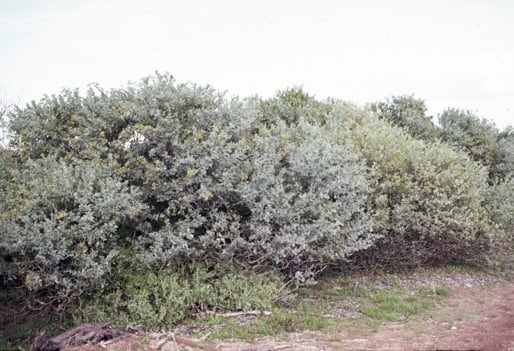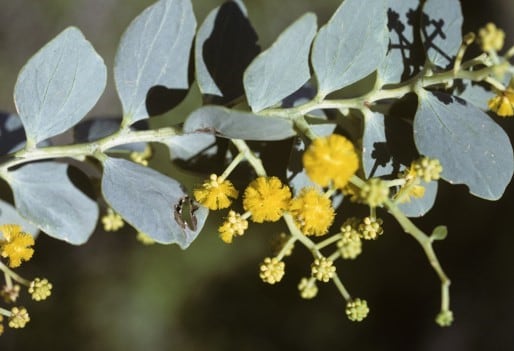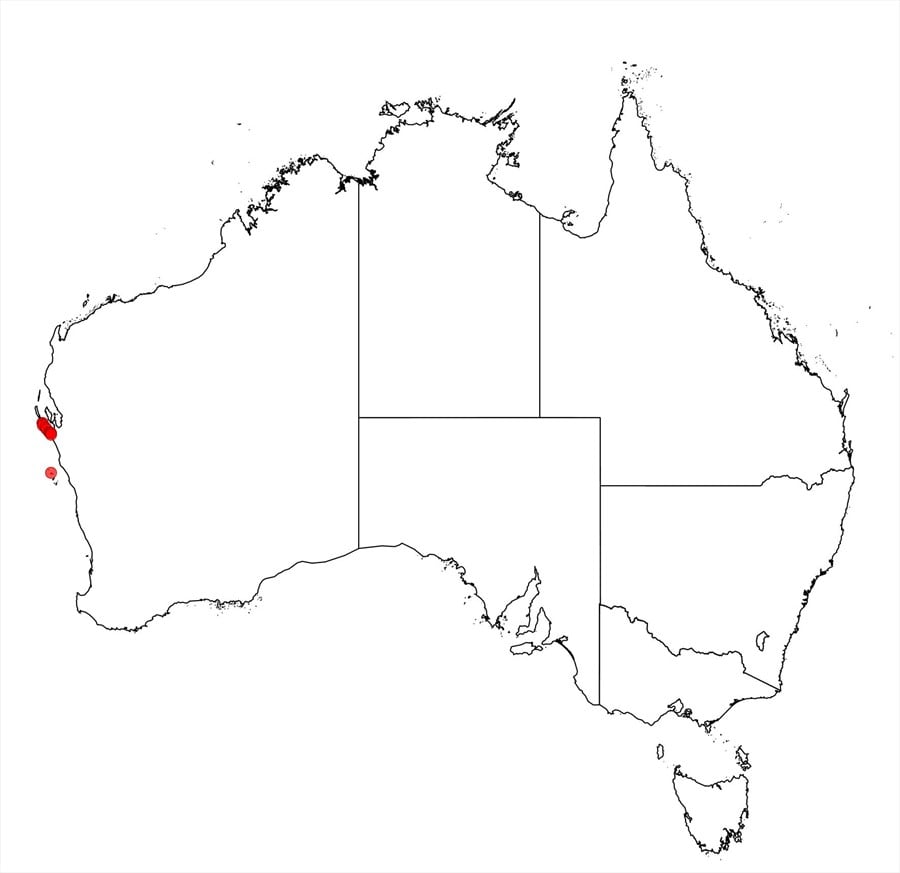Acacia didyma A.R.Chapm. & Maslin
WATTLE
Acacias of Australia
Family
Fabaceae
Distribution
Scattered in the Shark Bay area where it occurs on Dirk Hartog Is. and Carrarang and Tamala Stns, and on East Wallabi Is. in the Houtman Abrolhos Group, W.A.
Description
Dense rounded shrub or tree, 1.5–4 m high. Branchlets ± pruinose, glabrous. Phyllodes orbicular to widely elliptic, 2–5 cm long, 1.5–4 cm wide, obtuse, subfleshy with age, glaucous, lightly pruinose, glabrous, 2-nerved, imperfectly 3–4-nerved on broadest phyllodes; lateral nerves not prominent, anastomoses few, sometimes obscured by wrinkling; glands 2, with lowermost 1–8 mm above pulvinus, and uppermost at base of mucro. Inflorescences normally 4–12-headed racemes; raceme axes 2–4 cm long; peduncles twinned, 5–10 mm long, rather stout, glabrous; heads globular, subdense, c. 20-flowered, golden. Flowers 5 merous; sepals united into a ±truncate calyx. Pods strongly curved to openly once-coiled, to 10 cm long, 12–15 mm wide, coriaceous-crustaceous, lightly pruinose, glabrous, shallowly undulate on outer margin. Seeds longitudinal, widely oblong-elliptic, 4.5 mm long, shiny, dark brown to black; aril large, yellow-brown (dry).
Habitat
Grows in sand on limestone ridges and consolidated dunes in scrub and shrubland.
Specimens
W.A.: 1.6 km W of causeway, near Carrarang Stn, T.E.H.Aplin 3432 (PERTH); Tamala Stn, B.R.Maslin 3699 (CANB, K, PERTH); East Wallabi Is., 8 Sept. 1959, G.M.Storr (PERTH).
Notes
A member of the ‘A. bivenosa group’ distinguished from the more northerly A. bivenosa and A. startii, and the more southerly A. telmica and A. xanthina, by racemes with twinned peduncles, large, strongly-curved to openly once-coiled flat pods and orbicular to widely elliptic phyllodes (l:w = 1–2).
FOA Reference
Data derived from Flora of Australia Volumes 11A (2001), 11B (2001) and 12 (1998), products of ABRS, ©Commonwealth of Australia
Author
A.R.Chapman, B.R.Maslin
This identification key and fact sheets are available as a mobile application:
URL: https://apps.lucidcentral.org/wattle/
© Copyright 2018. All rights reserved.









